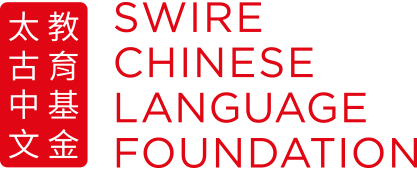Centres
There are 12 Swire Chinese Language Centres currently teaching about 23,000 schoolchildren in 147 schools with increasing support from universities training up the teachers. Each centre is led by a secondary school and encompasses other secondary schools in addition to their respective feeder primary schools.
The prime beneficiaries of this Programme are state-funded schools, many of which are located in particularly deprived parts of the country. The Programme is also supported by a number of partnerships with independent schools.
Our hope is for the schools to succeed in embedding Mandarin Chinese in their curriculums and to become, by the end of the Programme in 2026, self-sufficient and able to continue to operate without the need for our funding. In the meantime our focus is on supporting centres to achieve these aims.
Centres

- Kam Lally
k.lally@ast.kevibham.org King Edward VI Aston School in BirminghamSwire Chinese Language Centre Birmingham - Anglesey Primary School
- Aston Tower Community Primary
- Aston University Engineering Academy
- Birchfield Primary School
- Heathfield Primary School
- Highfield J&I School
- King Edward VI High School for Girls
- Prince Albert High School
- Prince Albert Primary School
- Sutton Park Primary School
- The Shrubbery School
- Helen Boyd
h.boyd@gwc.org.uk Boroughmuir High SchoolGeorge Watson’s CollegeJames Gillespie’s High SchoolSwire Chinese Language Centre Edinburgh - Bruntsfield Primary School
- Buckstone Primary School
- Castlebrae Community High School
- Castleview Primary School
- Craigour Primary School
- Dalmeny Primary School
- Echline Primary School
- Gilmerton Primary School
- James Gillespie’s Primary School
- Kirkliston Primary School
- Law Primary School
- Liberton High School
- Liberton Primary School
- Niddrie Mill Primary School
- Preston Street Primary School
- Prestonfield Primary School
- Queensferry High School
- Queensferry Primary School
- Royal Mile Primary School
- Sciennes Primary School
- South Morningside Primary School
- Taobh na Pàirce Primary School
- Tollcross Primary School
- Tynecastle High School
- Sarah Clayton
sarah.clayton@tgat.org.uk The Gorse Academies Trust - Aberford C of E Primary School
- Bardsey Primary Academy
- Boston Spa Academy
- Bruntcliffe Academy
- Elliott Hudson College
- Hillcrest Academy
- John Smeaton Academy
- Leeds Mathematics School
- Little London Academy
- Morley Newlands Academy
- Primrose Lane Primary School
- Richmond Hill Academy
- Ryecroft Academy
- The Farnley Academy
- The Morley Academy
- The Ruth Gorse Academy
- The Stephen Longfellow Academy
- Lin Liu
lin.liu@harrisfederation.org.uk Harris FederationSwire Chinese Language Centre London - Chobham Academy
- Chobham Academy (Primary)
- Harris Academy Beckenham
- Harris Academy Bermondsey
- Harris Academy Chafford Hundred
- Harris Academy Clapham
- Harris Academy Peckham
- Harris Academy Riverside
- Harris City Academy Crystal Palace
- Harris Girls Academy Bromley
- Harris Primary Academy Beckenham
- Harris Primary Academy Beckenham Green
- Harris Primary Academy Chafford Hundred
- Harris Primary Academy Crystal Palace
- Harris Primary Academy East Dulwich
- Harris Primary Academy Mayflower
- Harris Primary Academy Peckham Park
- Harris Primary Academy Shortlands
- Harris Science Academy East London
- St James the Great Catholic Primary School
- St John’s Church of England Primary Academy
- Shan Lane
s.lane@ncl.gdst.net Newcastle High School for Girls (Senior)Northumberland Church of England Academy TrustSt Cuthbert’s Catholic High SchoolWhitburn Church of England Academy - Bishop’s Primary School
- Duke’s Secondary School
- Grace Darling C of E Primary School
- James Knott C of E Primary School
- Marsden Primary School
- Newcastle High School for Girls (Junior)
- St Michael’s C of E Primary School
- Thomas Bewick C of E Primary School
- Warkworth Primary School
- William Leech C of E Primary School
- John Sparks
jms@radley.org.uk Oxford High SchoolRadley College - Bartholomew School
- Cheney School
- Dunmore Primary School
- Eynsham Community Primary School
- Fitzharry’s School
- Freeland CofE Primary School
- Hanborough Manor CofE Primary School
- Heyford Park School
- John Mason School
- Long Furlong Primary School
- Lowbrook Academy Primary School
- Oakley Church of England Combined School
- Oldfield Primary School
- Rush Common Primary School
- Sandhills Community Primary School
- St Peter’s CofE Primary School
- Stanton Harcourt CofE Primary School
- The Oxford Academy
- The Queen’s College, Oxford
- Thomas Reade Primary School
- Tyndale Community School
- University of Oxford Department of Education
- Waltham St Lawrence Primary School
- Wheatley Park School
To see how we have established these centres, click on the sections below.
School selection criteria
We did not wish to be prescriptive as to what such centres looked like and how they operated, and accepted that there would be variation from centre to centre depending on local circumstances. We were open to creative and innovative ideas.
However, we looked for as many of the following attributes as possible from the hosting schools:
- Commitment and enthusiasm of the head and support from the governors
- Capability of management to run the project
- Suitable physical resources
- Experience in outreach and of working with local schools
- Ability to reach secondary, primary and possibly nursery pupils
- Capability to make Chinese a core-curriculum subject
- Provision of in-house and external training schemes for teachers
- Willingness to offer placements for trainee teachers of Chinese, studying for PGCE or similar
If schools were interested, we asked these schools to submit a formal proposal to the trustees, outlining how they would best run a centre. In exceptional circumstances, the trustees were willing to consider proposals put forward on a school’s own initiative.
Proposal assessment
In assessing proposals, we considered issues such as:
- How many pupils and schools and in which years, would be reached and in what time frame
- Level of funding required
- What plans were there to bring the subject into the schools’ curriculum
- How and when would the centre be sustained without external funding
- How would logistical and timetabling issues be addressed
- Potential for the project to raise the aspirations of pupils from deprived backgrounds
- Staffing requirements
- How and from where would teachers be recruited
- Approach to pedagogy
- How would Chinese be taught from an introductory level through to A level in a continuum
- What assessment process (in house and public) would be in place
- How would technology be used to support teaching
- What plans were there for teachers and pupils to visit China
- Proposed measures of success and targets
The Foundation has supported the creation of centres for teaching Chinese, and now helps to support their running by funding costs such as teachers’ salaries and training, pupils’ trips to China, administration and technology. We expect the schools and universities involved in the centres to become self-sufficient and aim to support them up to that point.
David C Dempster - Head Teacher, Boroughmuir High School
“With our growing curricular provision and advanced plans for links with Shanghai schools, Mandarin will indeed be an integral part of our curricular and extra-curricular programme for a long time to come.”








